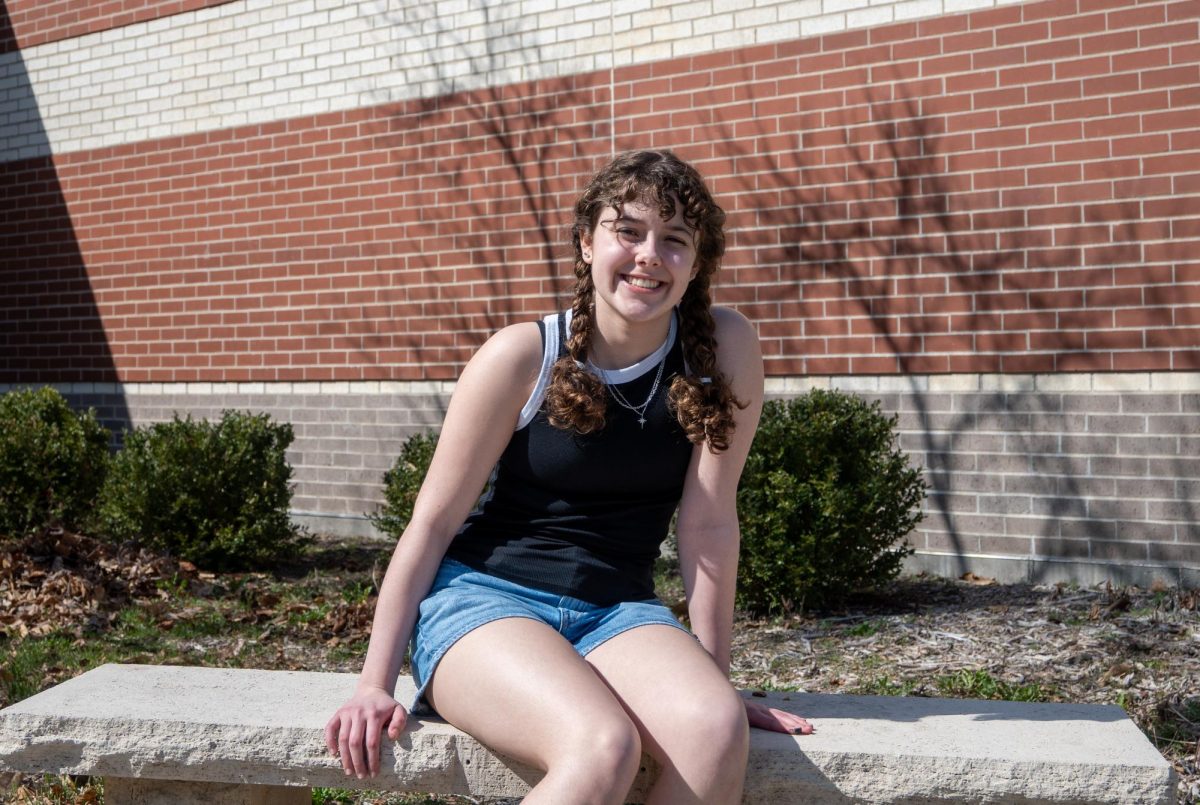Editor’s Note: This story discusses eating disorders and body insecurity
With summer around the corner, many students are relieved of stresses such as long papers, test prepping and nightly homework. However, a season full of tight clothes and pool days can promote a new stress: body expectations.
According to the National Association of Anorexia Nervosa and Associated Disorders, roughly 9% or 28.8 million Americans will experience an eating disorder in their life. The article later said on average, girls begin worrying about their weight around ages six to eight, with that concern increasing as they get older. .
“A survey found that 77% of children and adolescents as young as 12 dislike their bodies, and 45% say they are regularly bullied about how they look,” ANAND said.
Guidance counselor Katie Coldhom said that the upcoming season brings an increase in body negativity and image. She also said that the pressure students feel to reach a certain body standard is rising.
“With summer wardrobes, pool parties and warmer weather, people naturally want to look ‘good.’ The issue arises when ‘good’ leads to unhealthy habits to get thin as quickly as possible,” Coldhom said.
Anonymous Student 1 said there can be a lot of pressure from society to be thin during the summer but as life goes on, the stress begins to decay.
“I feel pressure to be skinny for the summer and especially the pool. However, I feel that as I get older, I have definitely come to accept who I am and what I look like doesn’t really matter,” Anonymous 1 said.
While it’s difficult to predict how young kids are affected by societal expectations, according to Mental Health America, negative body image and some eating disorders are prevalent in teenagers as young as 12 and 13 years old.
“I was around 13, in middle school [when my ED began] … I was hospitalized for a week because my heart rate was extremely low and really dangerous,” Anonymous 2 said.
With exposure to social media at a young age, middle school students can be filled with pressure to change themselves and conform to perceived expectations. According to CBS, on the social media platform X, a group titled “edtwt” advertises ways to get skinnier regardless of ages on the app.
“It probably was around whenever sixth grade started [when my ED began], because that’s when you kind of get introduced to all the social norms and middle school is a very different environment,” Anonymous 3 said.
While body image is a large part of disordered eating, Anonymous 1 said control of food can be a bigger aspect. They said the idea that when everything else in life is chaotic or imperfect, food is one thing that can be restricted and controlled.
“When you feel like you can’t pick and choose parts of your life, [avoiding food] is something that you can usually default back to,” Anonymous 2 said. “Obviously body image is a part of it but the physiological aspect is wanting to feel like you’re in control.”
As the internet and trend cycles move rapidly, some students, like Anonymous 2 said that body norms and pressure to be extremely skinny will not only increase significantly, but change to be normalized.
“[Eating disorders] are becoming a lot more normalized and unseen because that’s the way social media has set up a lot of things,” Anonymous 3 said. “I’ve noticed on my TikTok account, people are always romanticizing super skinny bodies and it puts everyone under the impression that it’s a healthy body image when it’s really quite the opposite.”
With ED content becoming more accessible due to social media, According to Forbes, there are significantly more resources for recovery and normality for body positivity compared to 20 years ago.
“Since the hashtag #BodyPostivity gained traction around 2012, the idea of promoting acceptance of all body types has earned more than 43 billion views on TikTok and over 12 million posts on Instagram,” Catherine Erdly said.
According to The National Eating Disorder Association, recovery can take months and even years. Anonymous 2 said that finding someone who underwent a similar experience to talk to or simply just one who can listen can be a helpful aspect of a person’s recovery.
“For me, it was good to go to someone who I chose, even if it’s just someone small, one person can help a lot. Just reaching out and talking about it… over time it became easier to talk and try to become better about it,” Anonymous 3 said.
Without treatment or communication, ED’s can be dangerous and even deadly. According to the ANAD, 10,200 deaths occur per year due to a decline in seeking help or treatment.
For further help with eating disorders or to reach and and talk, Free State’s mental health team and nurse are available to speak about or recommend to appropriate professionals to help with the prevention or treatment of eating disorders.























